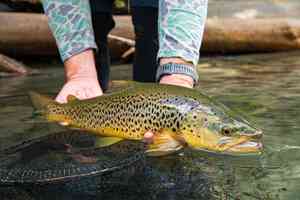When he was playing college football, Phil Thomas didn’t exactly stand out among his peers, at least size-wise.
“I was 6 feet tall, about 220 pounds,” said Thomas, who was a relative shrimp on the defensive line at Division III Waynesburg University. But at a couple of recent athletic competitions Thomas has felt differently.
The past two seasons Thomas has been invited to the trials for American Ninja Warrior, a popular TV show based on a competition that originated in Japan.
“You’ve got these gymnasts who are 5-4,” laughed Thomas, who has trimmed down to about 190 pounds. “For the first time in my life I actually felt like a big guy.”
Thomas embraces the big and burly personna, and is even known as the Ninja Lumberjack.
He has not made it beyond qualifying rounds for the show, which has become a hit TV series in the U.S. in recent years, but hopes to get another shot this year and recently submitted his application.
“I’m in the best shape of my life,” he said. “Hopefully the third time is a charm.”
Thomas didn’t come up with Ninja Lumberjack moniker as a gimmick. “I’m not the kind of guy who would make up something just to get on TV,” said Thomas, who is 33 and lives in Belfonte, Pa. “I actually got the nickname ‘Lumberjack’ when I was in high school.
“I showed up to school a couple days wearing flannel and work boots. It just stuck.”
Eventually it went beyond his attire. As a habitat manager at the Pennsylvania Fish and Boat Commission, Thomas often had to cut trees for various projects.
“From July to September I was running a chainsaw just about every day,” he said.
Since Thomas joined the Trout Unlimited staff last year as a habitat coordinator, the work with big wood has continued. For example, Thomas often has to identify trees to be used in habitat restoration projects, cut or pull those trees down, get them to the work site in the stream, and then install them. That hard work, and other aspects of his daily duties, have helped prepare him for the famously difficult courses that organizers of the competition throw at participants.
“A lot of what I do translates to American Ninja Warrior obstacles,” Thomas said. “Whether it’s walking on logs, walking on slippery rocks in a stream, cutting and bucking trees, or using a jackhammer, it requires balance and strength.”

Grip strength, in particular, is critical. Some of Thomas’ co-workers favor the term “monkey” for a guy who often takes unconventional routes when crossing streams. While his crewmates walk across bridges, Thomas is often underneath them, “walking” hand-over-hand on steel bridge I-beams.
“But I don’t do anything dangerous,” he adds with a grin.
Rachel Kester remembers one of Thomas’ first days on the job, when the two of them and another TU staffer were came upon a large wetland that had to be crossed or walked around.
“Phil used his Ninja skills and just jumped hopped from log to log to cross the area very quickly,” she recalled. “He made it look so easy that we thought we would follow suit.
“Of course we ended up with wet feet and learned an important lesson: Not everyone is cut out to be a Ninja.”
Thomas had been a longtime fan of American Ninja Warrior when his wife suggested that he try out.
“I said, ‘I can’t do that,’” he said.
But then he started practicing on obstacles and realized he could. One of his earliest training obstacle was a homemade Salmon Ladder, an obstacle that requires participants to vertically ascend a series of pegs using a bar.
“I just hammered some 2-by-4s to a tree,” he said. “My first try I made it up three rungs, and the next try I got up all the way.”
In addition to his on-the-job “training,” Thomas works out with a friend who has a 30-obstacle course in his yard. He also is fanatical weight-lifter and does cardio exercises to keep his weight down.
In 2013, Thomas was invited to the regional American Ninja Warrior qualifier in St. Louis. He fell on the double-tilt ladder, the fifth obstacle.
“I rushed it,” said Thomas, whose 2016 application video includes a clip of himself easily traversing that obstacle on his friend’s training course. “It was a stupid mental mistake that I’ve regretted every day since.”
Thomas finished just outside the top 30 that day, so didn’t advance to the city finals. Last year Thomas fell on the snake crossing, a notoriously challenging obstacle that has knocked plenty of veterans out of the competition. While it was disappointing, Thomas said last year’s fall was for the best. He had just started his new job at TU, and he and his wife had just purchased a fixer-up house.
“If I had advanced, I would have had to choose between working on the house and training,” he said. “One of them would have not been a priority, and that wouldn’t have been good.”
Thomas is not only physically invested in the effort. He also has establisheda Ninja Lumberjack Facebook page and Instagram account to keep friends and fans up-to-speed on his training, and also to promote the show that has inspired him so much.
In the coming months he hopes he will get an opportunity to share news about his third invitation and, ultimately, his making it out of the qualifying round and on to the championship in Las Vegas.
“The first year I wasn’t ready mentally,” he admits. “The second year I was ready physically, but, life-wise, it would have been too much.
“This year there are no excuses. I want to get out there and show that big guys can do this.”
And do it while wearing flannel.





























Comments